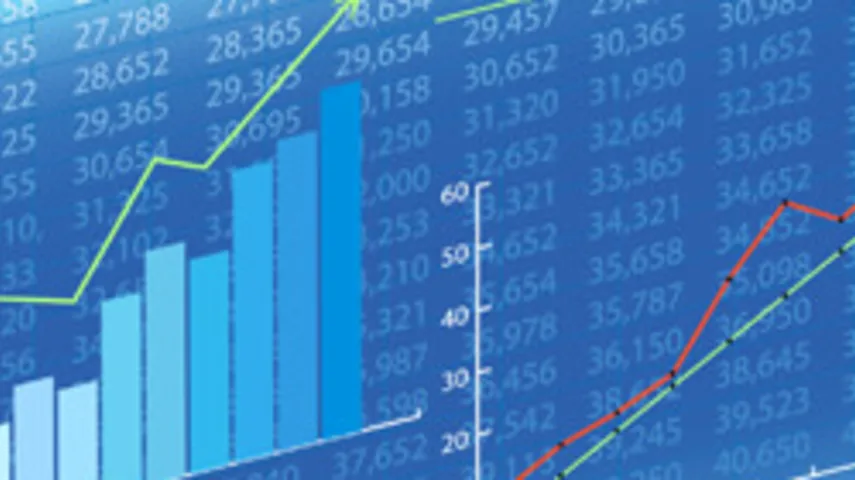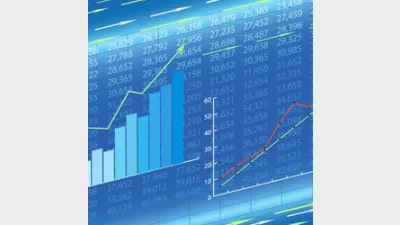A bright outlook for Australian equities investors



Janine Mace takes a look at the Australian equities market and finds the future looks good for investors, as long as they tread wisely.
When it comes to the outlook for Australia’s economy and its share market, if you talk to the experts the future is pretty bright. But just make sure you watch out for all those bumps.
Perpetual’s head of investment markets research, Matthew Sherwood, sums up current opinion about the outlook for the domestic economy by referring to it as being in the early stages of its “next golden age”.
“We are positive on Australian equities this year as the economy is going to be very strong and earnings are heading in the right direction,” he says.
Legg Mason's chief investment officer Australian equities, Reece Birtles, agrees with this assessment.
“We have a positive view as Australia has recovered from the global recession and the domestic economy doesn’t have the issues the global economy does. There are no banking or government debt problems to contend with like in other countries.”
Another bull when it comes to the outlook for Australian equities is AMP Capital Investors' head of investment strategy and chief economist, Dr Shane Oliver.
“Share markets are likely to rise further thanks to the combination of improving economic and profit growth, low inflation and sustained low interest rates at a time when there is still plenty of cash on the sidelines,” he notes.
“The Australian ASX200 and All Ords indices are expected to rise to around 5,600 by the end of 2010 and we see Australian shares continuing to outperform traditional global shares, reflecting their higher dividend yields and stronger growth prospects.”
Lincoln Indicators chief executive Elio D’Amato is also upbeat. “We are eternal optimists and feel that there will always be great opportunities for investors willing to do their research and understand the market,” he says. “If the market sees a consistent road to recovery then it will flow on through the second half.”
These positive views are reflected in the recommended asset allocations of most Australian research firms. In its March Quarter 2010 Investment Insight, Lonsec’s recommended portfolio currently has a positive view of Australian equities and is advising investors to use any corrections to move to a slightly overweight position.
The research house expects the local market to push higher over the year and has a target of 5,500 by year-end. “The good news is the top-down outlook for the Australian economy is quite positive and so earnings growth should be quite strong for most sectors over the short to medium term,” it notes.
Brace for the bumps
Despite the bullish assessments, there is recognition it will not be a smooth journey this year — a view underlined by the mid-February market slump.
“What we are going through is a correction within a still rising trend, consistent with our assessment that this year will see a bumpier ride for investors with more constrained but still positive returns,” Oliver says.
D’Amato agrees things will be unsettled this year. “We suspect the next two to three months will be a little volatile, with some exceptionally good and bad days. The market is feeling very jittery after such a big drive up during 2009,” he says.
“The market hates uncertainty and it can be spooked very easily.”
Hyperion Asset Management’s managing director and investment committee chair, Dr Manny Pohl, agrees the coming year will be testing. “The environment looking forward will be different and that will make things more difficult,” he says.
“One could get caught up by the groundswell of positive views, but the risks are still there.”
After the big rise in 2009, the market will have to work harder to continue an upward momentum.
“In the past 12 months we have had a very strong rise, but the market was recovering from very distressed levels and extreme levels of pessimism,” Birtles says.
Sherwood agrees it will be tough going.
“The market has risen around 50 per cent from the lows and has come a long way, but those were the easy gains. Now will be the extended period of more difficult gains,” he says.
This is also Lonsec’s assessment. “The easy money has already been made from PE expansion after the cyclical low and now most sectors are beginning to look fully valued. The market will require solid earnings growth to keep moving higher from here.”
Paul Winter, an equity strategist with PRV’s investment manager Investors Mutual Limited, agrees there is potential for volatility.
“Unemployment remains relatively low and our exposure to South East Asia and in particular China should see us perform better than the average advanced economy, however, it will likely be a bumpy ride,” he says.
Time for the report card
The current reporting period is seen as being particularly important for Australian shares, with the focus being on corporate earnings.
“Shares are moving from a multiple driven phase to an earnings driven phase,” Oliver explains.
This means analysts and investors are expecting to see evidence of either corporate earnings growth or a much more positive outlook.
“The February reporting season is vital,” Sherwood says. “Even though earnings may be negative for the last six months of 2009, it will be the outlook statements that will be important.”
If companies disappoint, market analysts will be forced to revise down their forecasts. However, this is something he believes is unlikely. “We think they will surprise on the upside.”
D’Amato agrees corporate results will set the tone for the rest of the year.
“During the reporting season — if we see earnings maintained — then the positive outlook will kick in and we see the third and fourth quarters as being positive,” he explains.
Analysts are setting the bar high for the market. Winter says the consensus view has the Australian market pricing in a 25 per cent increase in earnings for 2010 and 22 per cent for 2011, while the market is currently trading on a price/earnings multiple of 16 times earnings.
“Our view is that many sectors of the share market are currently expensive and that many share prices, in particular for more cyclical companies, are being based on earnings that are unlikely to materialise,” he says.
Despite the potential for disappointment, some experts take a longer-term view and see any downturns as buying opportunities.
“These issues will lead to volatility in Australian equities, but if you have the view that earnings have gone up from their earnings trough of 9 per cent then the outlook is positive,” Birtles explains.
“Volatility has implications for the Australian market, but it can also offer opportunities for investors.”
Avoiding the traps
Despite their largely positive views, the experts agree there are definite risks ahead for the Australian economy and share market.
One is the gap that will occur between the winding up of the Government’s economic stimulus and the recommencement of business investment.
“If you look at the economy last year, all the investment was driven by government, but now that is coming to an end and the private side must take over,” Pohl says.
Although the current tightening cycle in interest rates and the strong foreign exchange rate reflect the strength of the Australian economy, if the cost of money becomes too high, domestic demand could slide and cut corporate earnings.
“Given that Australia has not had the downturn like in other countries and has not had the deleveraging that has occurred, there is still the potential for problems if household budgets become stressed due to rising interest rates,” Birtles says.
“The risk is that the consumer gets stressed again.”
Pohl agrees: “If there is a major increase in interest rates it will be a negative influence for the market, but it depends on how far up they go. If it was to go higher than 6 per cent, it could cause problems.”
The impact of rising bonds yields on the Australian equity market is what keeps Sherwood awake at night. “The key risk [for Australian equities] is rising bond yields,” he says. “This may lessen the relative yield attractiveness of Australian equities to bonds.”
With the Reserve Bank on a tightening cycle, Sherwood is not entirely convinced inflation is under control. “Rising inflation is a big risk to the Australian economy and the share market, and it has not yet received a lot of attention,” he says.
“Most of the inflation is coming from the supply side of the economy and that is not very sensitive to interest rates, so the Reserve will need to keep an eye on that.”
Signs of rising prices in the food and energy sectors are already being observed in Australia and this could cause difficulties for the local economy, according to Schroders Investment Management’s head of Australian equities, Martin Conlon.
“The elevation of energy prices to levels closer to global parity will inflict significant pain on consumers,” he says.
Continuing turmoil in global debt markets is also a concern for local companies needing offshore funding.
“The problem for Australia is we need to source capital overseas,” Pohl notes.
He believes a big ‘sleeper’ issue is the lack of credit availability for Australian businesses — particularly small and medium enterprises.
“For smaller businesses it is really getting hard to obtain finance and that could mean the Australian economy will not go as well as we all expect. There has not been a lot of thought about what will happen when funding for businesses is not flowing readily,” Pohl says.
For this reason, Hyperion is taking a close look at the balance sheet of all its investments. “We always prefer companies with strong balance sheets and a net cash position, but now the balance sheet is the number one thing for investors,” Pohl argues.
Another important but largely overlooked risk for the local share market is regulatory reform.
As Lonsec notes, “Regulatory risk is another risk that is on the increase of late. The Labor Government is reviewing regulation and licences in a number of industries including banking, wealth management, health, telecommunications, gaming and media. The outcomes may have an adverse impact on certain sectors and need to be watched closely.”
Pohl agrees this is a concern: “Australian regulators and the Government may try to fix something that is not broken.”
He also points to the potential impact of the debate in Basel about increases in the liquidity requirements for banks, which may represent a major change for the banking sector and its earnings potential.
“These are the things one has to be aware of and keep an eye on. This is especially the case for Australian banks, which have performed very well, but may now be influenced by overseas changes,” Pohl says.
Where things look rosy
Given the relatively positive economic outlook for Australia, a number of areas are seen as representing good opportunities for investors.
“We believe there are still a lot of better than average opportunities in the market,” Birtles says. “One area is domestic cyclicals, which are quite well positioned.”
Companies such as Adelaide Brighton Cement and Boral will do well from the earnings recovery and rising housing starts in the local economy, he says. Online employment company Seek will also benefit from rising job advertisements.
Birtles believes the key this year is to find companies with a strong balance sheet and earnings profile.
“The market lacks confidence in where sustainable earnings are, so there is an opportunity to identify good businesses that can provide strong earnings,” he says.
“We are very keen on something like News Corp as it is a strong business with good earnings, as shown in its recent results.”
There are also opportunities in defensive stocks that have been left behind in last year’s share market rise, Birtles notes. “A company like Amcor is at a good multiple and has the opportunity to benefit from synergies following its merger [with Alcan Packaging].”
Conlon believes investors need to shift their focus if they want to make money.
“Few sectors are in obvious undervalued territory and the benefits of focusing on stocks in which investors panicked over financial leverage have passed. It’s time to focus on companies which are less reliant on assistance from exogenous factors such as commodity prices or strengthening growth,” he says.
One area in which financial advisers need to take a greater interest is carbon trading. Pohl believes smart investors are already moving to focus on this area.
“Carbon trading is a key issue and one that needs to be considered,” he says. “You need to be sure of the impact of carbon on a portfolio.”
D’Amato agrees it is important, but prefers to view it in light of its profit potential.
“There will be a range of great opportunities flowing from it in terms of thought leadership and providing services,” he says.
“We have seen a boom in some green industries already and many will go on in the future to become good investments. It is worthwhile thinking about this from an investor’s perspective.”
Recommended for you
Melbourne advice firm Hewison Private Wealth has marked four decades of service after making its start in 1985 as a “truly independent advice business” in a largely product-led market.
HLB Mann Judd Perth has announced its acquisition of a WA business advisory firm, growing its presence in the region, along with 10 appointments across the firm’s national network.
Unregistered managed investment scheme operator Chris Marco has been sentenced after being found guilty of 43 fraud charges, receiving the highest sentence imposed by an Australian court regarding an ASIC criminal investigation.
ASIC has cancelled the AFSL of Sydney-based Arrumar Private after it failed to comply with the conditions of its licence.











